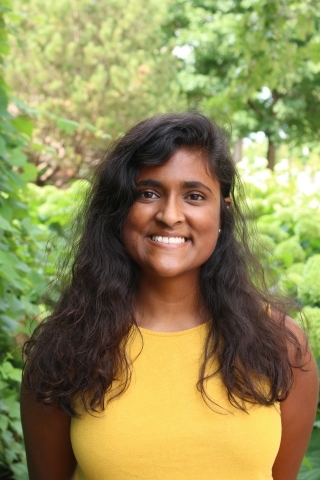Judee Sharon scholar, scientist, entrepreneur – is leading the charge on cancer detection through a new method of biocomputing. It is called TRUMPET (Transcriptional RNA Universal Multi-Purpose gate platform). TRUMPET combines the simplicity and robustness of in vitro biocomputing methods and adds signal amplification and programmability. The result is the potential to review an individual’s DNA and establish predictors for cancer.
Sharon is a PhD candidate in Biochemistry, Molecular Biology, and Biophysics at the University of Minnesota and an ARCS Minnesota Scholar, and scientific entrepreneur. She first sought a PhD after working at an agricultural biotech start-up as they were looking for grant funding. “The way entrepreneurial funding currently works, it generally helps people to have a PhD...the odds of getting funded or hired are higher if you have one,” Sharon explains.
From her PhD, TRUMPET emerged. Traditionally, scientists approach biocomputing in one of two ways. A researcher might apply computing math to living cells harvested in a lab, and others might apply it to DNA. Sharon explained that DNA is more than just biology. It is also chemistry and material. As an example, Sharon said scientists are using brain chip implants to aid Parkinson’s patients with their fine motor skills. There is a need for technology to communicate between the brain’s biology and the computer chip’s electricity.
Sharon and her team are working to understand how biology works at its core. An analogy to understand what the team does is similar to studying a car engine. If you open the hood and look at the engine, you don’t understand it. You could name some parts and functions of the car, but you don’t understand how it works. “But if you take the car engine out and break up each piece, then maybe, you can learn how each piece works and put it back together,” explains Sharon. “We’re trying to understand all the different pieces of biology by taking it apart and putting it back together.”
Sharon and her team chose to use this technology for cancer diagnostics because of the wide gap between early cancer detection and receiving a cancer diagnosis. She explains the culture and expectation of when to go to the doctor are responsible for this gap since it relies on the patient to come to the doctor only once they start having symptoms. But that can be too late for some, such as pancreatic cancer patients. She is grateful to the many scientists working on cancer treatments, “but not as many people are working on the beginning stages on catching cancers that are not easily detectible.”
Sharon thanks ARCS for the continued support throughout her PhD as graduate school is a long process. “ARCS connects us with people who very immediately appreciated our science,” she says. Besides, the appreciation for the arduous work of ARCS Scholars, Sharon acknowledges the sense of community ARCS provides. “What I will take away from ARCS is a sense of community and the help offered,” she concludes.

